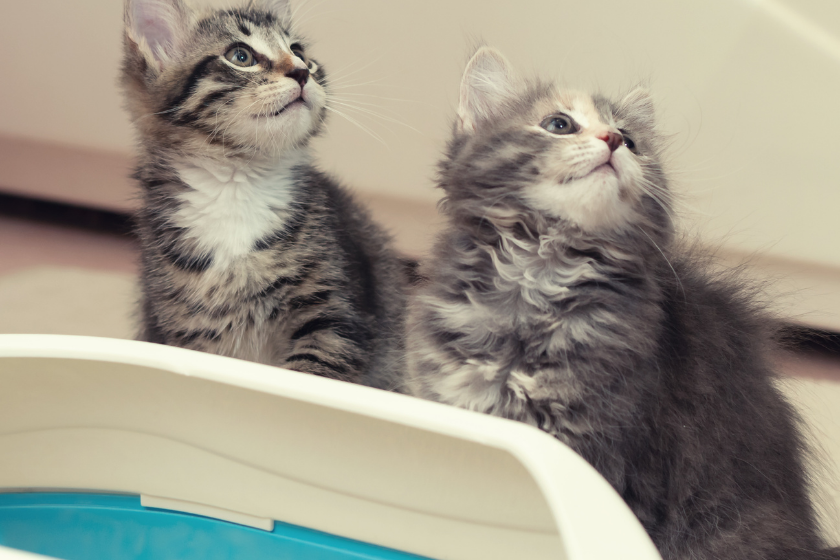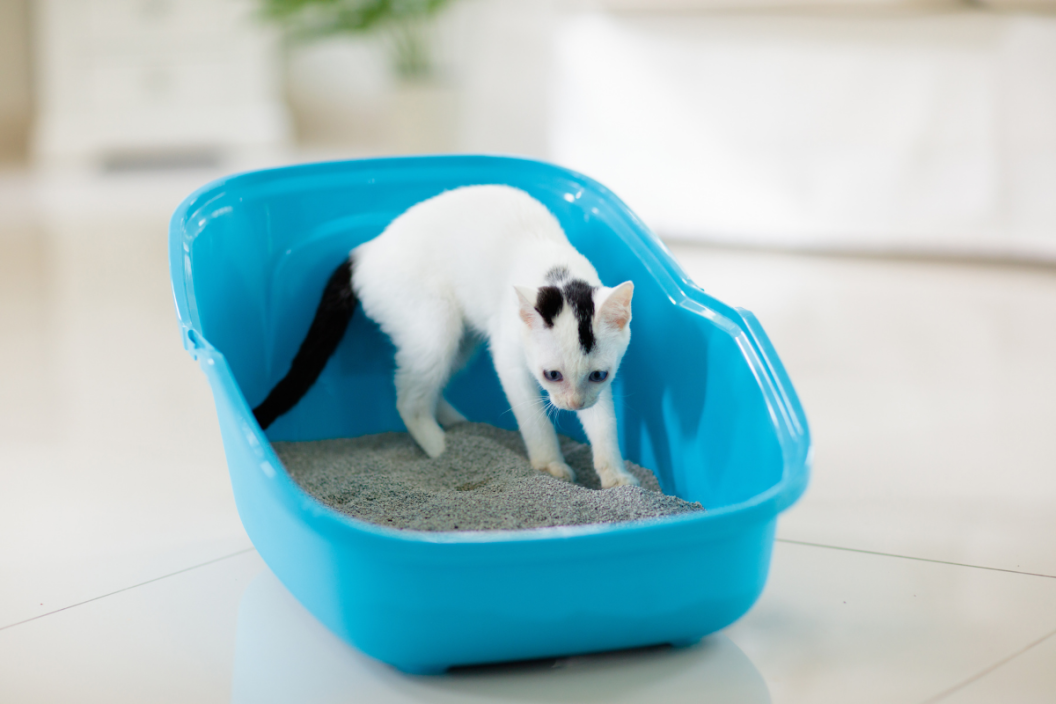Dogs aren't the only pets that benefit from training! After you've kitten-proofed your home, stocked up on interactive cat toys, and welcomed your new furry friend, it's time to start thinking about training your kitten. Every cat owner knows that one of the most important things to teach a new kitten is how to use a litter box. Unless you want your cat to treat your entire house like their personal bathroom, kitten litter box training is necessary.
Luckily, cats have instincts that make litter box training easy. They naturally gravitate towards sandy areas (which is why sandboxes are a popular dumping ground), so once you introduce a kitten to a litter box, they'll begin using it relatively quickly. Before you start kitten litter box training, you'll need to gather a few supplies and learn how to make this a positive experience. With a little time and patience, your kitten will head straight for their box when nature calls.
Litter Box Training Tips

RELATED: Training Cats to Go Outside Starts Slow and Steady
People often wonder how cats automatically know how to use a litter box. While it's true that they have a natural inclination to cover their waste, they still might need help figuring out how to do that in your home. My cat, Bandit, was a pro at litter box training when she was just a young kitten. All we had to do was show her where her litter box was and give her a little praise when she decided to use it. Of course, accidents happen—but there's nothing a good enzyme cleaner can't take care of! Here's what you'll need for litter box training:
- Kitten-safe litter
- Shallow-opening litter box
- Litter scooper
- Waste bags
- Stain and odor remover spray
Before bringing your kitten home, set up their litter box in a quiet spot in your home. The box can go anywhere in your bathroom, laundry room, or another private space. Fill it with an unscented, kitten-safe litter that does not produce a lot of dust. Using an open litter box makes training easier because you can pick your kitten up and put them into it as needed. Once they are older, you can switch to a covered litter box if you'd prefer to conceal what's inside.
When your kitten comes home, guide them to their litter box so they know where it is. Let them walk around the room and explore. If you notice any signs that they may need to go to the bathroom, like pawing on the ground, or circling, pick the kitten up and place them in the box. You can also use a treat or piece of cat food to lure them toward the box.
If your kitten has an accident outside the box, try to interrupt them and place them into the box to finish going. Use a cheerful voice to assist with the redirection and never punish them. They won't understand what went wrong and negative reinforcement can lead to behavioral issues in your cat, including a fear of the litter box. Also be sure to clean any areas where they had an accident with a powerful, odor-removing spray. Kittens are drawn to the scent of their feces and will return to that spot if there is any smell left.
How to Clean a Litter Box

If you are having litter box issues with your cat, you probably aren't cleaning the box often enough. Depending on the number of cats you have, you may even need to have multiple litter boxes. Cats prefer to relieve themselves in a clean litter box, so it's important to clean out all of the clumps daily. If you are not using a clumping litter, it may be a little more difficult to clean, but you can still pull out all the feces.
Once a week, throw out all of the used litter in the box and refill it with new litter. Once a month, the litter tray should be scrubbed clean with hot water and soap. Once a year, you should buy a brand new litter box for your cat.
Looking for more kitten tips? Follow the Wide Open Pets Facebook page.




